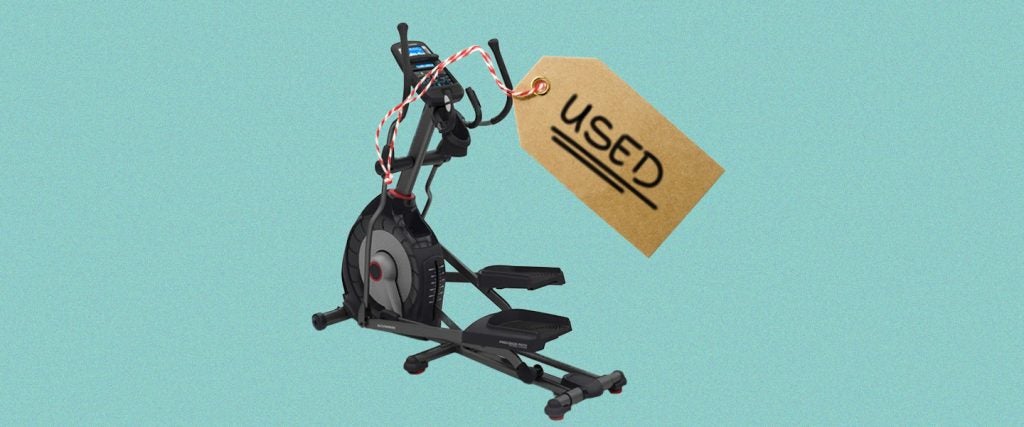“I think I can get us a gym-quality elliptical for $900. Are you good for half?”
As far as the quality of roommates goes, Ron, the man behind the above question, was always at the Cadillac-level. At nearly 400 pounds, he was also in the midst of his most serious weight-loss attempt to date, having already dipped by 50 pounds. He was now trying to secure regular access to a reliable home cardio training option to help him magnify the effects of his diet.
“Definitely,” I responded.
Ever the shrewd negotiator, Ron had acquired a barely-used, $2,500 elliptical for us at less than half of its retail price. It was the home-gym equivalent of the car that’s only driven by your grandmother to and from church, the odometer racking up fewer than 2,000 miles in the process.
That elliptical was an incredible gift to our household. Not only did it contribute to Ron losing another 120 pounds, but it provided me with a reliable, productive alternative to sitting idle and chomping on Tostitos while I watched Miguel Cabrera pursue the Triple Crown as a member of my beloved Detroit Tigers.
Honestly, we almost felt guilty about scoring it so inexpensively. But admittedly, we also got lucky. Aside from getting the price down, we didn’t do any real due diligence in terms of the elliptical’s quality. We merely took the seller’s word for it. Thankfully, it worked out. In hindsight, though, we should have done a much more thorough evaluation of a secondhand product, that despite being advertised as more or less pristine, was still, in fact, used (if only ever so slightly).
Yeah! How should we be assessing this stuff?
Well, we can start with free weight equipment, because that’s simple to evaluate. As long as the dumbbells and barbells are straight, and the clasps are able to rotate their way onto the weights and secure them firmly, there’s not much to take issue with. The same is true of any pull-up, push-up and dip stands: If they can support your body weight without any structural strain, chalk it up as a functional piece of equipment and keep moving.
Resale cardio machines, however, are far more likely to present you with complications, especially if they’re automated. The thing about user-propelled machines — like ellipticals and rowing machines — is that they retain the majority of their value even if their monitors are completely broken. Obviously, you’d prefer to have a functional monitor at your disposal, but on user-propelled devices, the ease of the motion is the most critical element. If something is impeding the movement of the seat, chain and especially the flywheel of a rowing machine, you may be better off passing on the half-price Concept2 rowing machine you spotted on Craigslist.
The same thing goes for ellipticals that have anything interfering with the propulsion of the pedals or handlebars. Unless you’re a master mechanic, any range-of-motion issues should signal the end of your interest.
What about treadmills?
Treadmills and other self-propelled training machines pose an entirely different set of problems. Before you purchase one, you need to ensure that every button on the control panel works, and that the machine responds properly to each of them once they’re pressed. This goes for any speed adjustments, incline changes and time modifications. You should also slowly work the treadmill up to a comfortable jogging pace and judge the integrity and adherence of the tread, observing whether or not it slips or slides at all as you run. Because any sort of slippage can lead to a precarious disruption of balance.
Just as importantly, you need to be absolutely certain that the safety mechanisms work. A functioning auto-stop is the difference between stumbling off of a rapidly decelerating treadmill, or being rocketed out of the treadmill and into a wall at 10 miles per hour.
Can you summarize your advice into one simple statement?
You know I can: Test everything!
I don’t care if you end up going through a full 15-minute HIIT workout with crescendoing intensity; you need to thoroughly test every training setting on the device you’re purchasing to establish your confidence that the machine won’t break down 30 seconds after you park it in front of your big screen. After all, the caveat emptor clause is going to kick in the moment you hand over your money and cart that equipment away, and it would be nice to minimize the likelihood that you’re going to experience buyer’s remorse.
Otherwise, all you’re gonna be in the market for is another sucker who also doesn’t ask any of the right questions.

